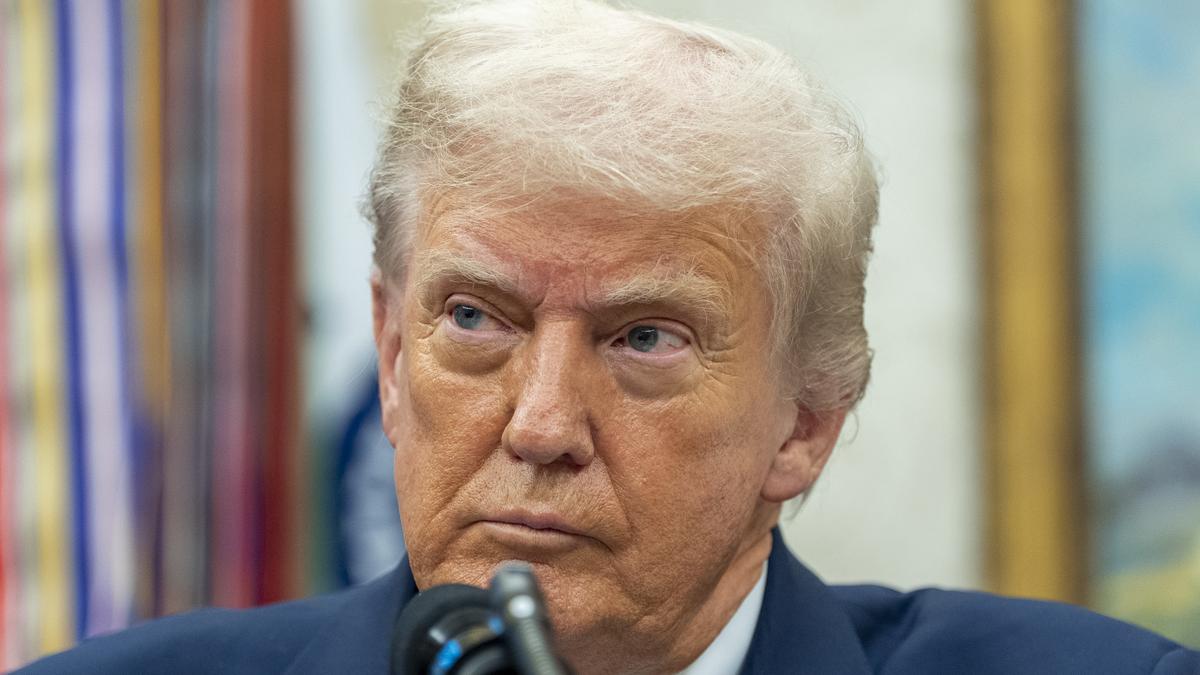President Donald Trump’s higher tariff rates of 10% to 50% on dozens of trading partners kicked in on Thursday, August 7, 2025.
| Photo Credit: AP
President Donald Trump’s higher tariff rates of 10% to 50% on dozens of trading partners kicked in on Thursday (August 7, 2025), testing his strategy for shrinking U.S. trade deficits without massive disruptions to global supply chains, higher inflation and stiff retaliation from trading partners.
U.S. Customs and Border Protection agency began collecting the higher tariffs at 12:01 a.m. EDT (0401 GMT) after weeks of suspense over Trump’s final tariff rates and frantic negotiations with major trading partners that sought to lower them.
“RECIPROCAL TARIFFS TAKE EFFECT AT MIDNIGHT TONIGHT!,” Mr. Trump said on Truth Social just ahead of the deadline.
Goods loaded onto U.S.-bound vessels and in transit before the midnight deadline can enter at lower prior tariff rates before October 5, according to a CBP notice to shippers issued this week. Imports from many countries had previously been subject to a baseline 10% import duty after Trump paused higher rates announced in early April.
But since then, Mr. Trump has frequently modified his tariff plan, slapping some countries with much higher rates, including 50% for goods from Brazil, 39% from Switzerland, 35% from Canada and 25% from India.
Tariffs on India
The initial 25% tariffs announced by U.S. President Donald Trump on Indian imports came into effect on Thursday (August 7, 2025).

Last week, the White House announced that India will face tariffs of 25% after Mr. Trump issued an executive order listing the various duties that Washington will impose on exports from countries around the world.
In addition to the 25% tariff announced last week, Mr. Trump on Wednesday (August 6, 2025) imposed another 25% levies on India for its purchases of Russian oil, bringing the total duties slapped on India to 50%, among the highest imposed by the U.S. on any country in the world.

Eight major trading partners accounting for about 40% of U.S. trade flows have reached framework deals for trade and investment concessions to Mr. Trump, including the European Union, Japan and South Korea, reducing their base tariff rates to 15%.
Britain won a 10% rate, while Vietnam, Indonesia, Pakistan and the Philippines secured rate reductions to 19% or 20%.
“For those countries, it’s less-bad news,” said William Reinsch, a senior fellow and trade expert at the Center for Strategic and International Studies in Washington.
“There’ll be some supply chain rearrangement. There’ll be a new equilibrium. Prices here will go up, but it’ll take a while for that to show up in a major way,” Reinsch said.
Countries with punishingly high duties, such as India and Canada, “will continue to scramble around trying to fix this,” he added.
Mr. Trump’s order has specified that any goods determined to have been transshipped from a third country to evade higher U.S. tariffs will be subject to an additional 40% import duty, but his administration has released few details on how these goods would be identified or the provision enforced.
Trump’s July 31 tariff order imposed duties above 10% on 67 trading partners, while the rate was kept at 10% for those not listed. These import taxes are one part of a multilayered tariff strategy that includes national security-based sectoral tariffs on semiconductors, pharmaceuticals, autos, steel, aluminum, copper, lumber and other goods. Mr. Trump said on Wednesday (August 6, 2025) the microchip duties could reach 100%.
China is on a separate tariff track and will face a potential tariff increase on August 12 unless Mr. Trump approves an extension of a prior truce after talks last week in Sweden. He has said he may impose additional tariffs over China’s purchases of Russian oil as he seeks to pressure Moscow into ending its war in Ukraine.
Published – August 07, 2025 09:57 am IST

